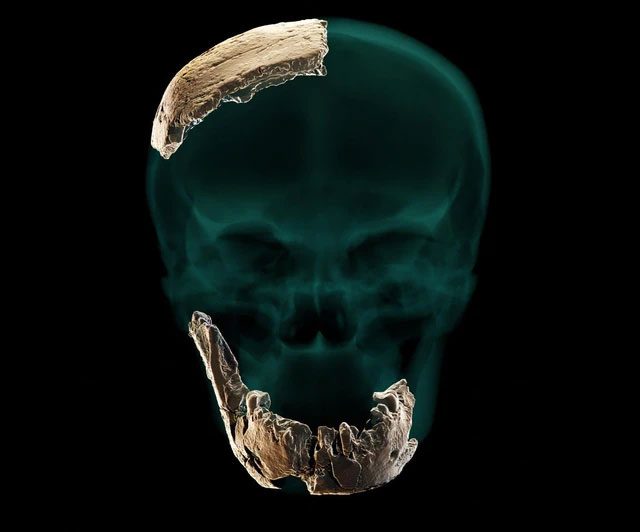This lineage of humans lived in what is now Israel 120,000-140,000 years ago, relating to both our ancestors and an ancient human species.
Named Nesher Ramla Homo, this ancient human lineage reveals a complex mix of ancient Eurasian and African populations, as well as a blend of traits and technologies between our species, Homo sapiens, and the extinct Neanderthals.
The research team, led by Professor Israel Hershkovitz from Tel Aviv University and Dr. Yossi Zaidner from the Hebrew University of Jerusalem (Israel), identified this mysterious lineage from fossil evidence, artifacts, and sediments from the Levant region in the Middle East.

A previously unknown lineage has been identified in Israel – (Graphic: TEL AVIV UNIVERSITY).
The Levant, a region nicknamed the “Fertile Crescent”, spans several eastern Mediterranean countries today and is believed to be the “first stop” for ancient humans migrating out of Africa, as well as an important cradle of human civilization.
Nesher Ramla Homo could be a crucial piece in the puzzle of human evolutionary history.
According to a summary of the research by SciTech Daily, the findings suggest that this ancient human lineage may represent one of the last remaining populations of the genus Homo during the Middle Pleistocene.
The Middle Pleistocene is a geological epoch that lasted from about 1.8 million to 11,500 years ago, marking significant changes for humanity.
Nesher Ramla Homo existed during that period, approximately 120,000-140,000 years ago. They exhibited more archaic anatomical features compared to contemporary Neanderthals as well as current Homo sapiens in the Levant.
They also possessed technologies known only to Homo sapiens and Neanderthals.
All of this continues to shroud this group in mystery, as it is difficult to determine their place on the family tree of Homo sapiens and Neanderthals, which share a common ancestor.
According to the researchers, a deeper investigation of fossils in Israel could reshape our understanding of the origins of Neanderthals.
The authors suggest that interpreting the fossils and tools from this lineage may elicit various reactions from anthropologists.
Nonetheless, the age of the fossils, the morphological relationships, and archaeological discrepancies, along with the discovery site at the “crossroads” of Africa and Eurasia, make this a significant discovery.


















































